ثلاث قطع شبة في كيس خرز. خرزات بيضاء مع مرجان؛ ضد عين الحسود (المرجان).
Three pieces of alum in pearl bag, white beads with coral, Against the Evil eye (Coral).

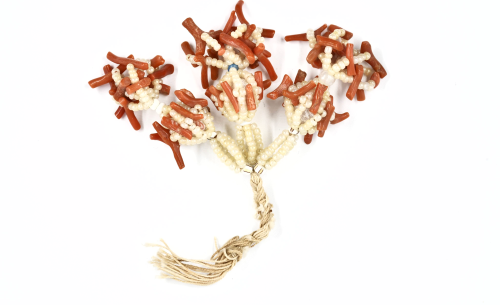
ثلاث قطع شبة في كيس خرز. خرزات بيضاء مع مرجان؛ ضد عين الحسود (المرجان).
Three pieces of alum in pearl bag, white beads with coral, Against the Evil eye (Coral).
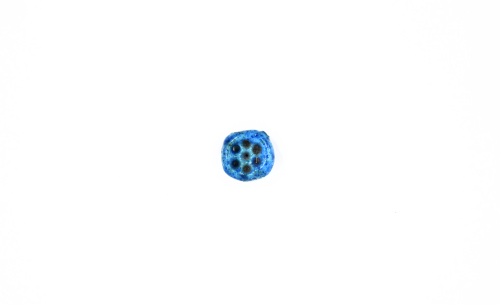
زجاج أزرق مثقوب؛ ضد عين الحسود. شغل الخليل.
Pierced blue glass, against the evil eye, Hebron work.
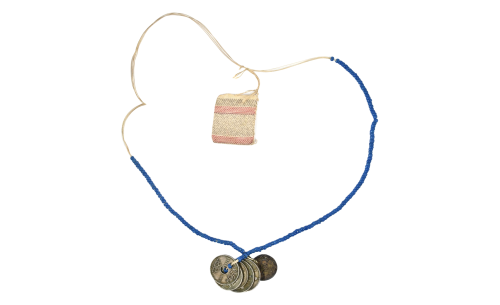
طلسم، خرزات زرقاء وقطع عملة مصرية، النقود هي ثمن الطفل؛ ضد عين الحسود والقرينة؛ من طفل. القدس، عام 1918.
From a child, Jerusalem, 1918. Blue beads, a talisman and Egyptian coins, the money is the child's purchase price. Against the evil eye, and the Qarineh [female demon].
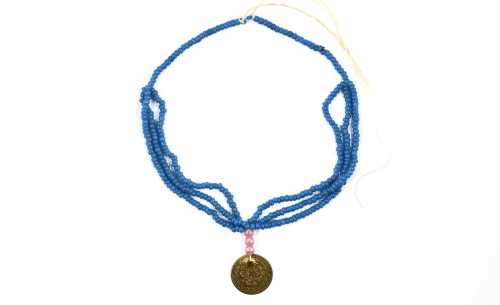
سلسال، زينة وحجاب؛ ضد عين الحسود؛ بنات صغيرات. اشتري في القدس.
chain, jewelry and amulet, against the evil eye, little girl. Purchased in Jerusalem.

خرزة بزلة ضد الشحاذ في العين ؛ ثوم وخرزة زرقاء؛ ضد عين الحسود؛ اليد ضد النفس الشريرة
Against phlyete disease [Stye/ hordeolum] of the eyes ( خرزة بزلة) [A puncture bulge, small, red with lines], garlic and blue pearl, against the evil eye, the hand against the evil soul.
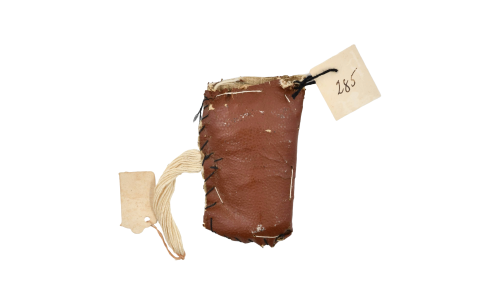
طلسم بقماش أزرق؛ ضد عين الحسود؛ بذور فلفل، قزحة (أيضاً حبة بركة) وقليل من التراب، بيت أونيا، عام 1916. الكيس الخارجي جديد، بذور الفلفل والقزحة هي ضد عين الحسود؛ لا أعرف من أين جاء التراب.
A talisman with blue fabric (against the evil eye), pepper seeds, qizha (= iris) (also habit barakeh) (= Nigella sativa) and some earth, 1916. Bet Unia [Beitouna]. The outer bag is new. The pepper and qizha (= iris) seeds are against the evil eye, I don't know where the earth came from.
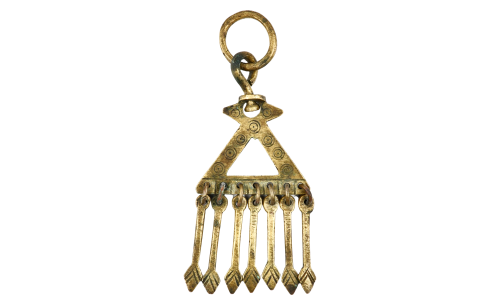
تتدلى من مثلث، سبع رماح، نحاس، يظهر في المثلث دوائر من المفروض أن تمثل عيون ضد عين الحسود؛ تخيط على الملابس.
أخذت من طفل من أرطاس، عام 1934.
Seven sprees hang from a triangle, copper, the triangle shows circles which are supposed to represent eyes against evil eye, hung on clothes. Taken from a child from Artas (village) in 1934.
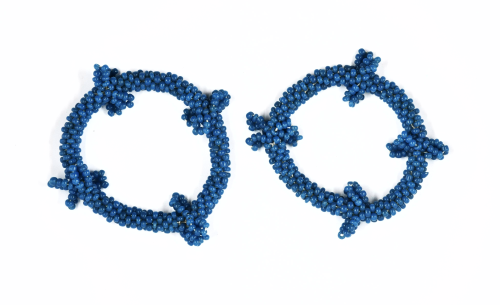
خاتمان، يتألفان من [خرزات] زرقاء صغيرة؛ للحماية من عين الحسود.
Two small, blue rings [protection] against the evil eye.
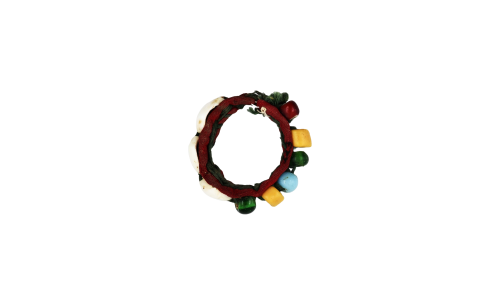
تتألف من خرزات كبيرة وصدف ودع، للحماية من عين الحسود والجن.
اخذت من لفتاوية كانت تضعها على قدم طفلها.
عام 1920.
Made of large beads and Wada', shells, against the evil eye and the Jinn [demon], taken by a woman from Lifta 1920. She had it on her child's foot.
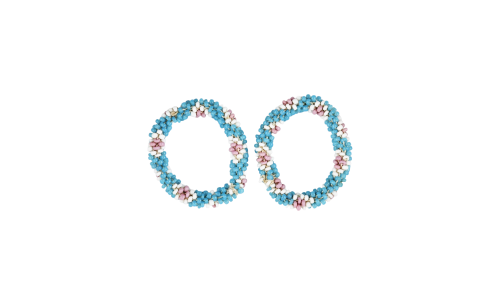
اسوارتان للاطفال تتالفان من خرز بتشكيل جميل، للحماية من عين الحسود؛ شغل فلسطيني.
اشتريت في القدس، 1928.
Two bracelets for children, made of beads, beautiful patterns, Palestinian work. Against evil eye, purchased in Jerusalem in 1928.
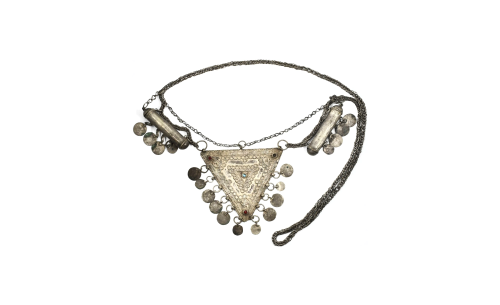
سلسال بدوي فضي له خيارتان، لكل منهما اربع دناديش ومثلث كبير (ليحمي من عين الحسود) مع دناديش هي صفائح مرصعة ب لؤلؤ الوسطى زرقاء.
القدس، عام 1914.
Bedouin necklace, silver, with two خيارت [2 cucumbers], each with four pendants and a large triangle (against the evil eye) with small plates as pendants inlaid with beads. The middle one is blue. Jeru [Jerusalem], 1914.
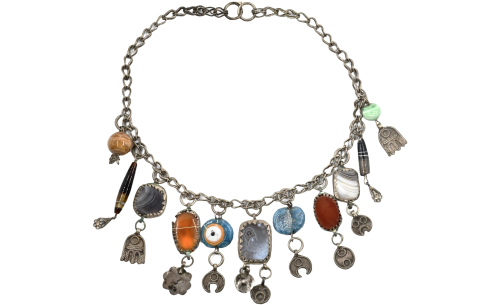
سلسلة، (تخيط من قبل الفلاحات على القبعة)، تتألف من عيون، أيدي، أهلة صغيرة وأحجار. يظهر في الحجر الأوسط ما يشبه شكل العين ولهذا فإن تأثيره فعال جدا؛ ضد عين الحسود؛
القدس، عام 1913.
سلسلة [chain] (also sewn on the hat by some fellahin [peasant women], it contains: eyes, hands, crescents and stones. The middle stone shows [the] eye as if it were natural, and is therefore said to be very effective (against the evil eye), Jerus [Jerusalem], 1913.
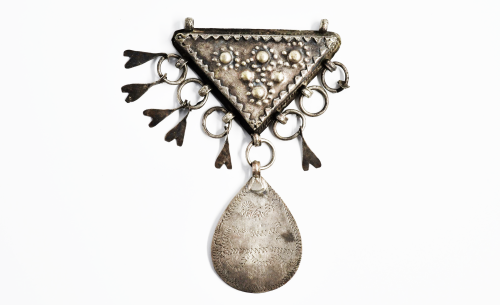
تقليد لعلبة طلسم صغيرة مثلثة، المحتويات ؟. لها سبع دناديش. الدندوشة الوسطى ماسكة بيضاوية، تمثل بشكل شبه مؤكد أشكالاً بدائية لشجرة الحياة.
عام 1916، القدس.
A triangular replica of a talisman case. Contents? It has seven appendages; the middle (one) is an oval Mâskeh, which are probably primitive imitations [replication] of the tree of life. 1916 Jerusalem.
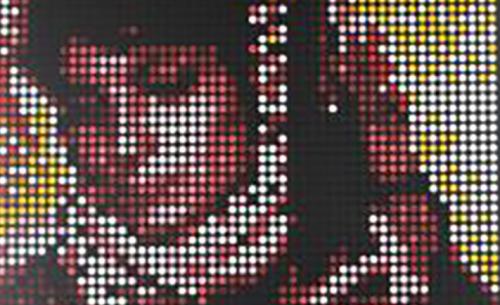
This collection is made up of artwork from individual artists who have donated their work over the lifespan of BZU and BZUM.
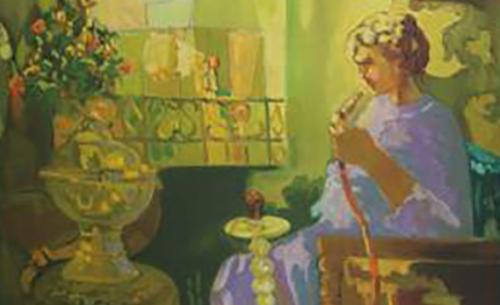
In 2020, BZU Museum curated a retrospective exhibition of the artist Toufic Abdul-Al facilitated through collaboration with his son, Tareq Abdul-Al, and artist Nasser al-Soumi, who curated the exhibition. The exhibition featured reproductions of the artist's private collection, adhering to high standards of production and printing quality. Additionally, a loaned collection from Mr. Tareq Abdul-Al was included. Titled "Eternal Rhythms," the exhibition took place in 2020. Following its conclusion, Mr. Tareq Abdul-Al generously donated 15 reproduced artworks as a unique, limited edition collection within the Birzeit University Museum.
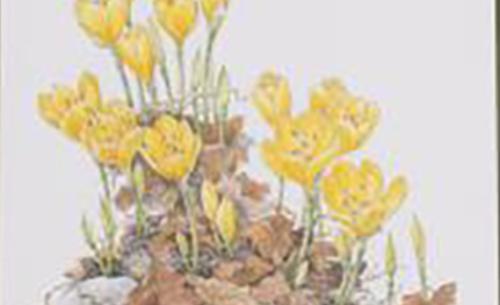
Lois Nakhleh donated her collection in two separate installments, each containing identical artistic content and thematic focus. Her work centers around documenting Palestinian flora, specifically wild herbs and flowers. Each collection includes detailed posters showcasing the artworks and a documentation folder.
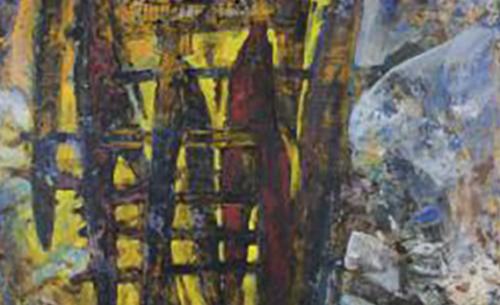
In 1999, Samira Badran sent BZU two pieces of art titled “Jerusalem,” that were produced in 1986. These two pieces remained in the collection for well over a decade until they were later replaced in 2014 with pieces titled “ Earthwork and Plow,” that were produced in 1994.
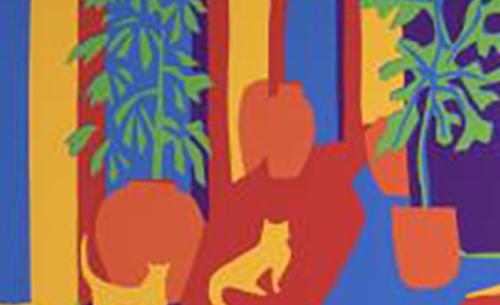
In the late 1990s, Samia Halaby gathered work from herself and fellow artists based in the United States for a donation to BZU. In addition to unique pieces from Samia Halaby, this collection includes pieces from (NAME THE ARTISTS).
In addition to these pieces donated earlier, this collection also includes artwork donated by Samia Halaby, from her special exhibition, “The Kafr Qasem Massacre” held in BZU Museum in 2017.
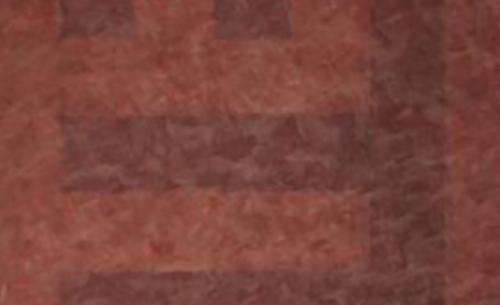
In November of 1994, the Swiss artist Renee Feurer donated a collection that includes six pieces of large sizes of ink on cloth printing that was inspired by Abu Yazid al Bastami. These pieces are displayed in Kamal Nasir Hall and BZU Library.
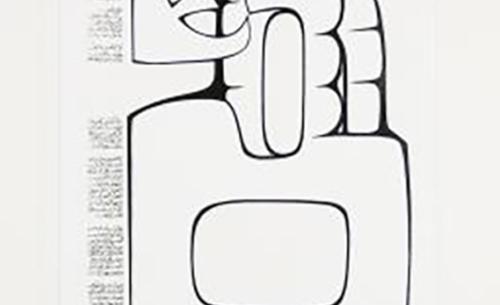
Mona Al-Saudi donated this collection of twelve pieces of her work titled: The Hand of Stone Draws the Place – Adonis.” This artwork collection of hers was said to be inspired by the poetry of Adonis from the time when Mona Al-Saudi was based in Beirut.
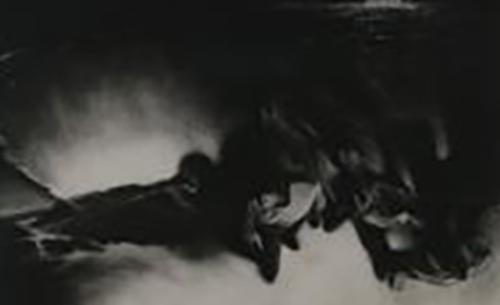
In 2003, Belgian artist, Maurice Pasternak, donated a collection of three pieces to BZU to support the university and the Palestinian cause. These pieces were produced using lithographic printing.
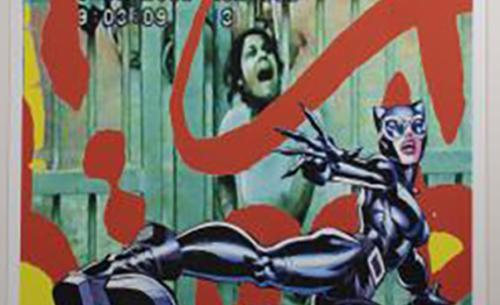
This collection of Laila Al Shawa's contains two individual pieces that she donated to BZU after she participated in a collective exhibition at BZU Museum in 2011 titled, “Framed Unframed, (part 1).” These pieces are from her late work that, according to the artist, carries the meanings of oppression against women.
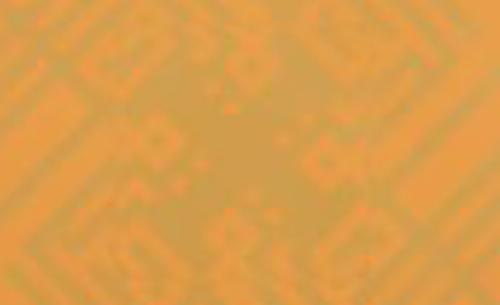
In 1998, Kamal Boullata donated a piece of art titled: “Twelve Lamps from Granada,” that includes a group of pieces of silk printing and a book that he explicitly and exclusively designed for this artwork. The work includes poetry printed in arabesque text in the book. Kamal Boullata donated the piece to BZU along with two additional pieces (one untitled and one titled “I am Righteous”) using the same technique.
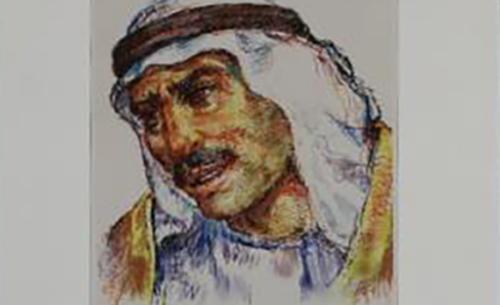
Ismail Shammout’s son donated this work in 2001 drawing from the art work his father produced through special programs he held around 1996. This collection of art is considered unique because of the digital drawing techniques. This collection was printed and signed by the artist.
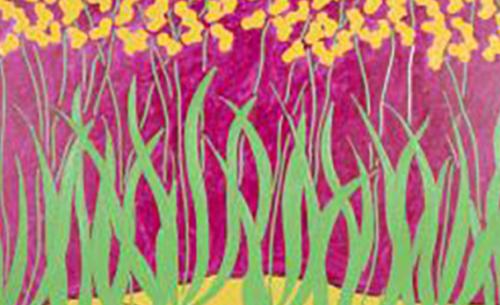
In 2006, Guy Cobb donated two pieces of art to BZU during his solidarity visit to Palestine. The pieces are unique in that they offer art for the visually impaired and defies classical notions of visual aesthetics through his inclusion of brail and touch-sensitive material and designs.
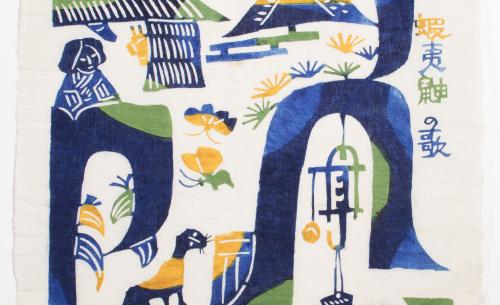
In 1997, Etel Adan coorindatekd and donated a collection of art specifically for BZU. This collection includes not only Etel Adan’s work but also features a number of pieces from Arab and international artists in support of BZU and in support of Palestine. This unique collection is a result of Etel’s artist network and her action and support of Palestine. According to 2023 Collections Survey at BZUM, this contains 22 pieces, featuring work by Etel Adan and (name a few other artists) among others.
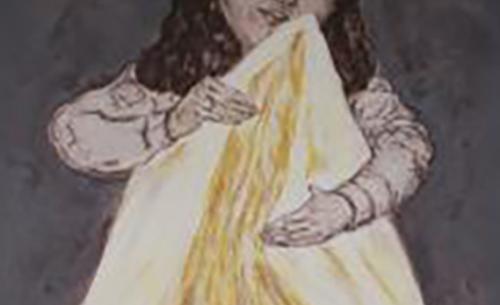
Marwan Qassab Bashi donated his special collection for the exhibition: “For the Children of Palestine” that was held both at BZU and Khalil al Sakakini Center in Ramallah. The collection of Marwan Qassan Bashi’s art was donated to both sites in 1997 with a special catalogue that documented the art works of each exhibition. The collection includes a range of unique techniques in various sizes and is a aesthetic and political centerpiece of our art collection. The pieces in this collection have been featured in several displays and exhibitions at BZU Museum.
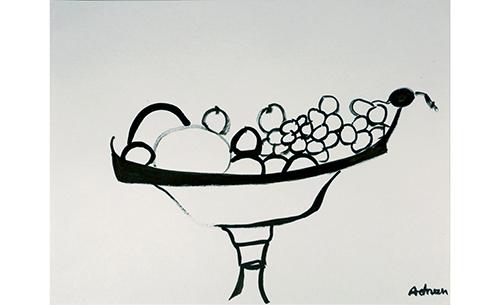
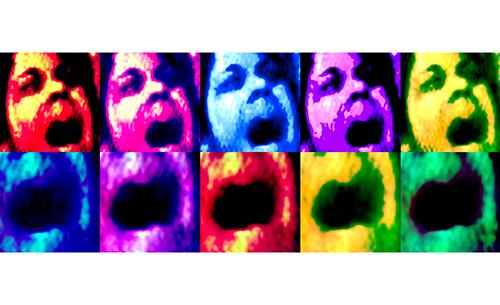
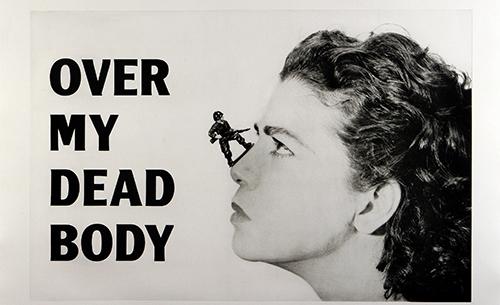
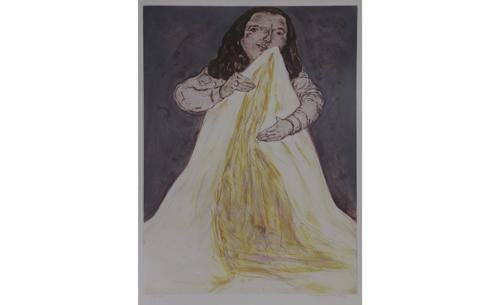
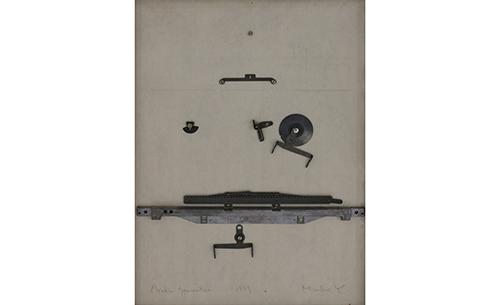
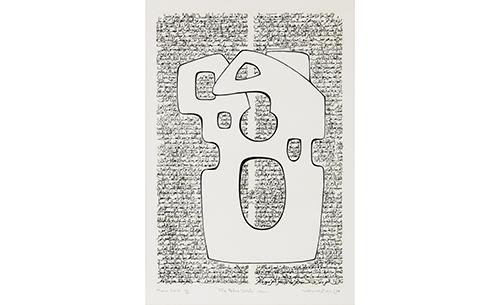
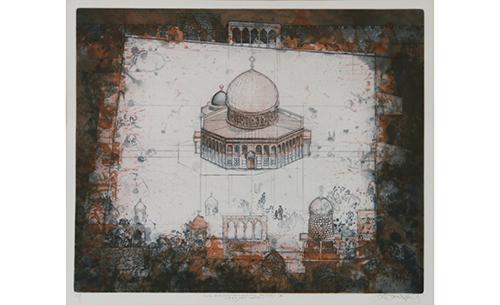
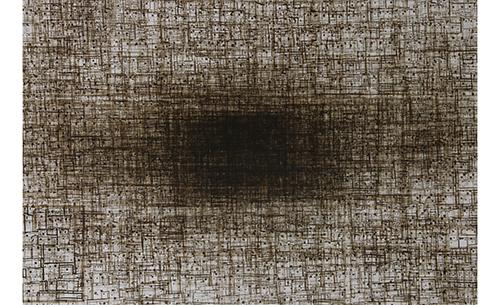
This Artwork was donated to Birzeit University Museum along with other artworks within "Unlike Other Spring" exhibition, 2016.
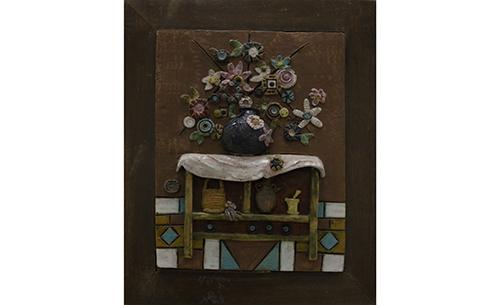
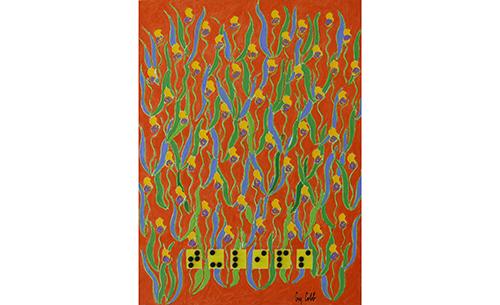
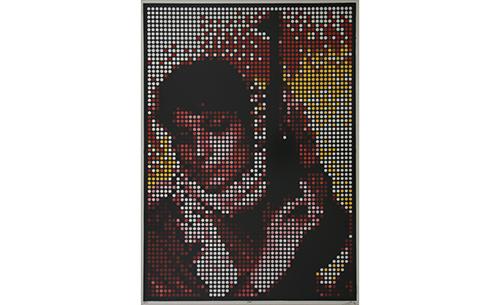
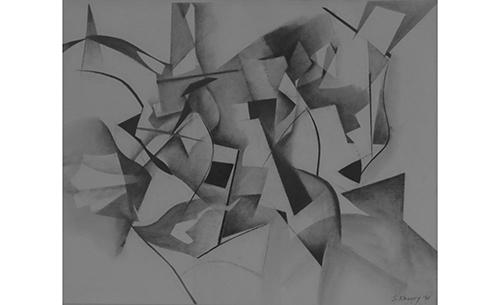
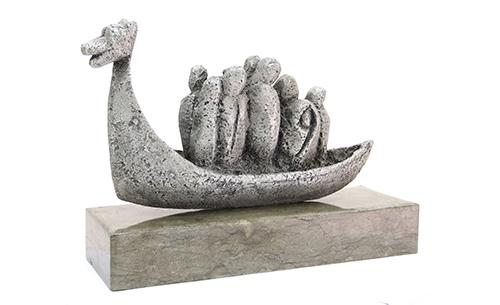
This Artwork was donated to Birzeit University Museum along with other artworks within "Unlike Other Spring" exhibition, 2016.
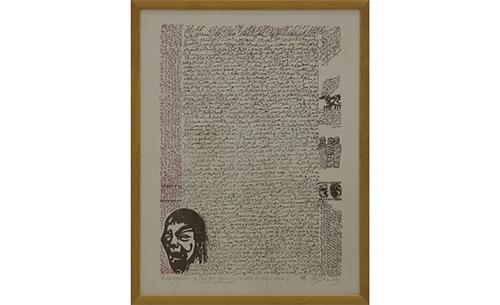
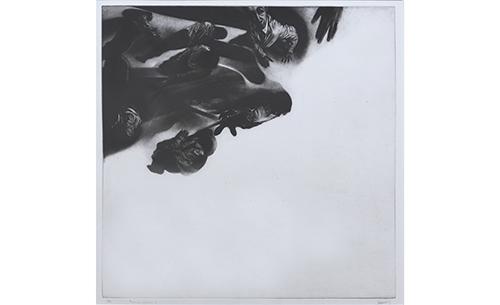
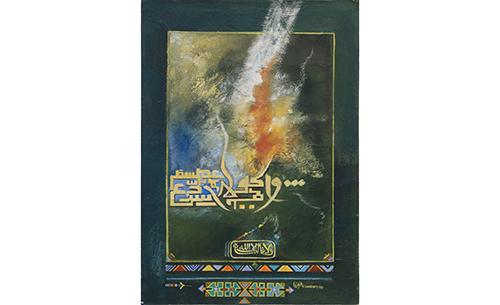
This Artwork was donated to Birzeit University Museum along with other artworks within "Unlike Other Spring" exhibition, 2016.
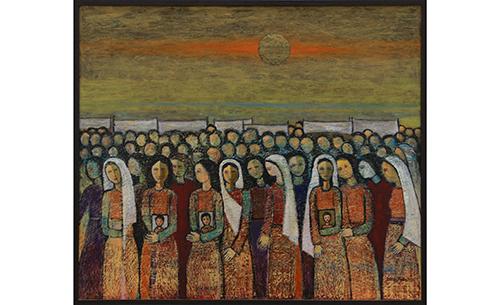
This Artwork was donated to Birzeit University Museum along with other artworks within "Unlike Other Spring" exhibition, 2016.
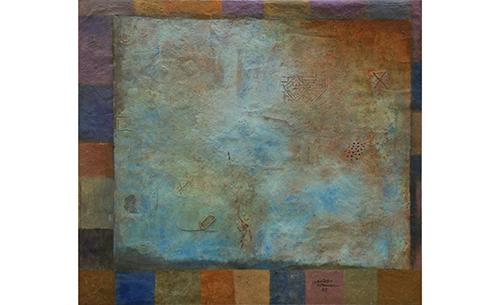
This Artwork was donated to Birzeit University Museum along with other artworks within "Unlike Other Spring" exhibition, 2016.
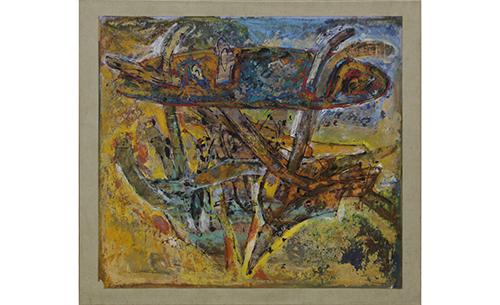
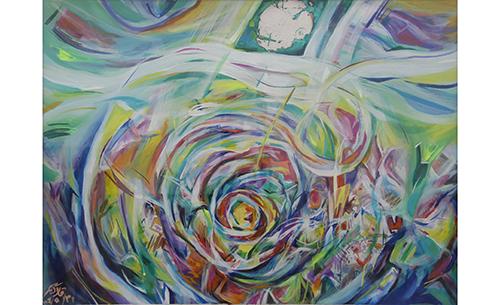
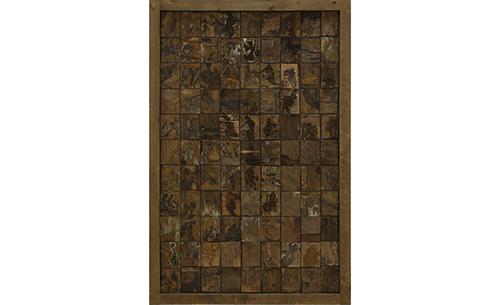
This Artwork was donated to Birzeit University Museum along with other artworks within "Unlike Other Spring" exhibition, 2016.
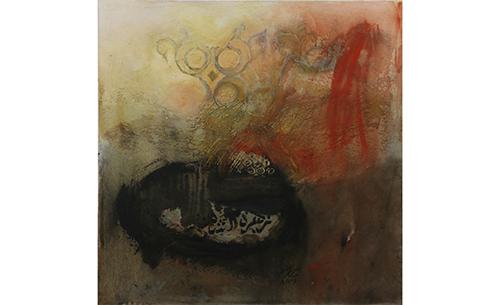
This Artwork was donated to Birzeit University Museum along with other artworks within "Unlike Other Spring" exhibition, 2016.
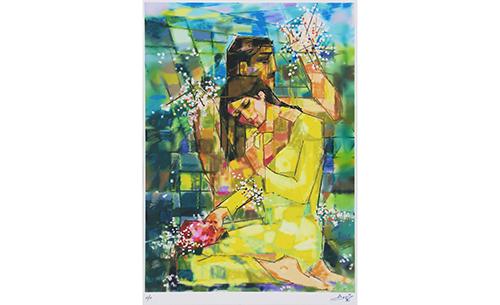
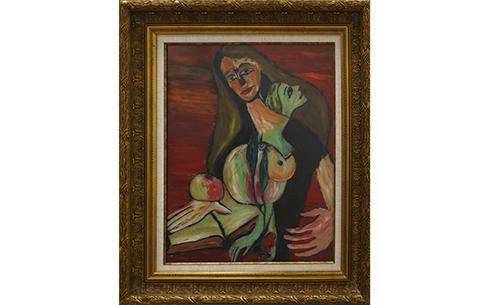
This Artwork was donated to Birzeit University Museum along with other artworks within "Unlike Other Spring" exhibition, 2016.
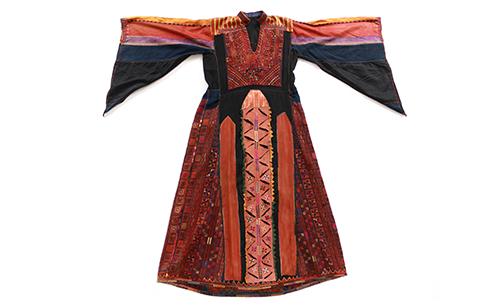
Al-Jilaya dress with large opening sleeves and intense embroidery work, where the chest panel shows qalayed, floral and geometrical motifs. The neck and shoulders are made with Ottoman striped cloth and the sleeves show patches of silk hirmizi cloth. The front side of the dress has patches of triangular shapes of silk with embroidery of flowers. The banayeq (sidelines) show rings and Al-reesh braidwork, along with geometrical and floral motifs. The back side has heavy and relatively long embroidery work, taking shapes of waves and geometrical figures, topped with Al-nakhl and Al-reesh braidwork.
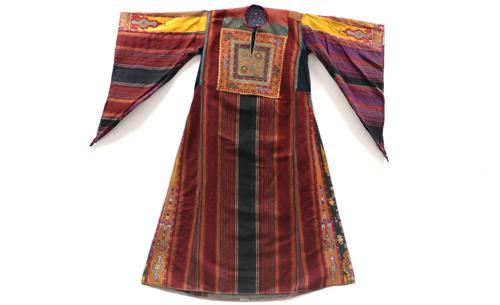
Malaq dress made with Abu Warda cloth, has a traditional malaq chest panel of flower pots, topped with two pieces of blue velvet cloth with a bird embroidered on it. The neck and shoulders are of red colored cloth and the sleeves are made with silk hirmizi cloth in addition to the original cloth of the dress with embroidered Bethlehem clock and a bird. The banayeq (sidelines) show embroidery of clock and floral motifs in addition to crosses.
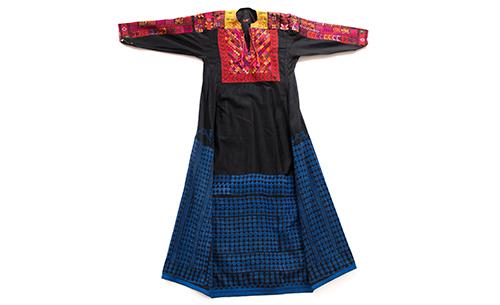
A dress with intense embroidery work on the chest panel similar to qalayed (necklaces) motif, surrounded with different designs of braidworks including flowers. The neck and shoulders are embroidered from the sides with different motifs, centered with an orange hirmizi needle work with flower shapes. The sleeves show different designs of embroidery, while the banayeq (sidelines) and the front and back sides show intense embroidery work in blue with cypress tree and feather motifs, along with talismans on the top side of the sidelines.
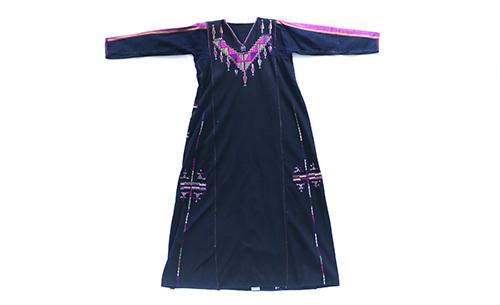
Black dress with bow motif embroidery and talismans braidwork on the chest panel, with cypress trees coming down from it. The neck slot shows talismans motif. The sleeves have two blue lines of the same cloth, and the front side has only thin longitudinal colored stripes. The banayeq (sidelines) show manajel (thick braidwork connecting the dress parts) and thick horizontal shapes with talismans. The back side has comb like teeth embroidered along with talismans and mawares in the back topped by cypress trees, identical to the back.
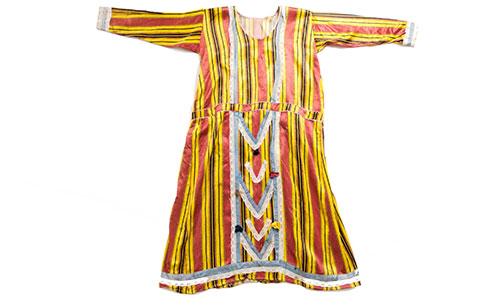
Colored silk dress with multiple colors, mostly yellow and red. The dress has several layers of blue and white cloths on top of one another at the end of the sleeves, the tail and the neck slot and the front side in V shape.
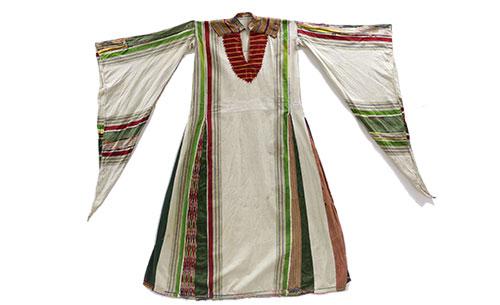
Wide sleeves dress of white cotton with red, green and thin dark blue stripes. The chest panel has striped Kashmir cloth with wavy edges. The neck and shoulders have additional silk cloth and braidwork surrounding the chest panel. The sleeves have silk (bird’s tongue) in addition to colorings in the original cotton cloth. The front and back sides have no embroidery work, and the tail is done with wavy needle work.
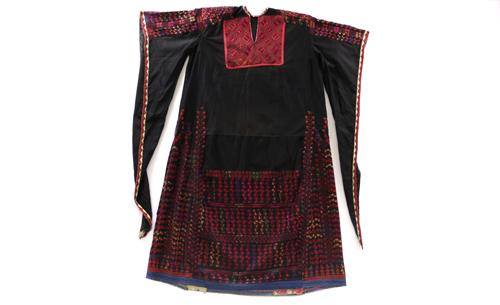
Black dress with wide sleeves, and aqras (geometrical figures) embroidery on the chest panel, the shoulders and along the sleeves, showing geometrical figures and the cypress trees braidwork. The sleeve opening has a tashreefa with white and red. The front side and the banayeq (sidelines) has intense cypress trees motif embroidery, while the back side shows atlas motif showing moons and other geometrical figures. The top shows cypress trees designs and the tail of the dress shows two lines of blue embroidery.
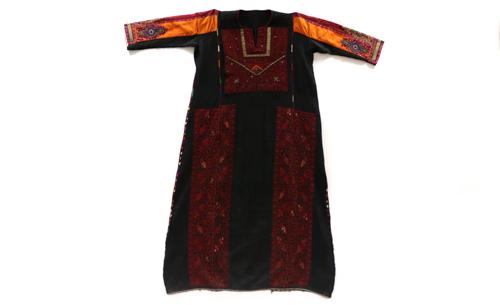
Black roman dress with bows motif embroidery on the chest pane, especially used in Ramallah areas, along with other floral and geometrical designs. Includes golden qasab thick needlework at the neck slot and above the chest panel. The sleeves, similar to those of the Bethlehem malak dress, have a clock motif embroidery stitched on hirmizi silk. The front side shows traditional mawares braidwork with the ostrich motif. The dress banayeq (sidelines) have manajel (thick braidwork connecting the dress parts) connecting the dress tail to the underarm. The back side is embroidered with the ostrich braidwork and the center shows wheat spike and feathers motif as well as birds. The chest panel has a side pocket.
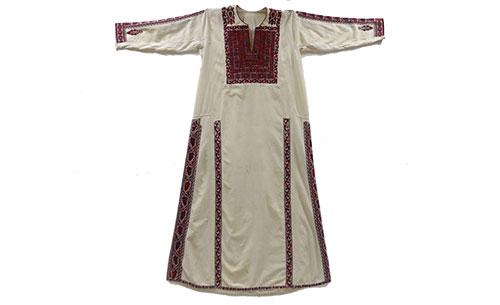
White dress with mostly red embroidery. The front side shows two thin braidwork stripes of mawares motif, on both sides. A long braidwork starts at the shoulders along the sleeves in a straight line, showing a specific shape at one end. The back side of the dress shows similar mawares briadworks on both sides, but the bottom of the back side has a special needlework with five partitions inside a rectangular shape.
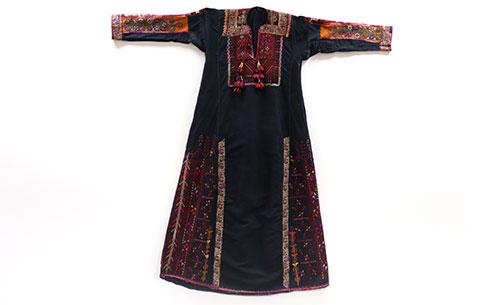
Black Kittan cloth dress, with chest panel framed from three sides with different colors, surrounding a tashreefa motif and an opening with a vest slot and laces. It is topped with a lulu braidwork that has flowers on both ends. The neck and shoulders are made of red cloth with a thick orange lacing. The sleeves include hirmizi cloth with multiple colors of embroidery and framed by lulu braidwork with flowers. The back side of the dress shows flowers from two sides with an oval in the center. The dress’s banayeq include soft floral motifs with geometrical shapes, surrounded by laces of geometrical motifs. A horizontal lulu braidwork with flowers is seen on the center of the dress’s front side, while the back shows horizontal briadworks of cypress trees and longitudinal ones similar to the front side.
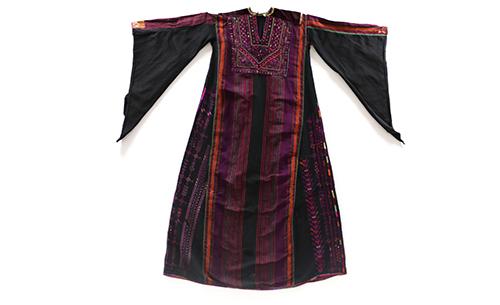
A Tifta (Al-Alam) cloth dress with large opening sleeves, with chest panel embroidery resembling a bow (Al-Anbar chest panel); which is square with geometrical and floral motifs on it. The top corner of the panel and the shoulders velveteen russet. The large opening sleeve with embroidery on the forearm and at the sleeve edge, with geometrical motifs. The banayeq (sidelines) shows floral motifs while the back part shows four thick braidwork of Al-Qasab needle work.
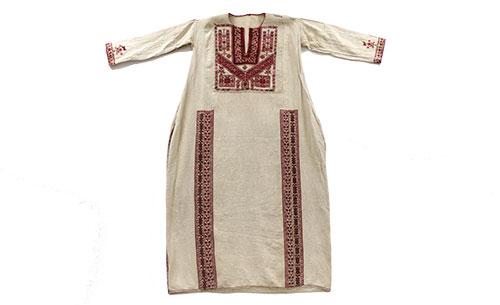
Roman white dress with regular long sleeves that show floral motifs, also shown underarm and on the sleeve end. Two thick embroidery works are identical on both sides with intense embroidery on the tail. The chest panel embroidery is embroidered with different motifs, where the center of the panel shows a bow topped by two branches of flowers, and under it, there are two squares of embroidery with feathers on the sides. The panel is framed by flowers.
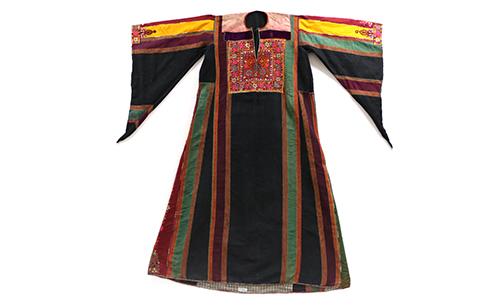
Malak Dress made with Ikhdari cloth with green, burgundy, orange and black stripes. The sleeves are made with silk hirmizi cloth. Embroidery on the chest panel resembles the traditional stitch of malak dress with floral motifs, while the neck and shoulders slot is made with pink cloth, connected to the chest panel by a line of velveteen russet. The front side of the dress shows the original cloth colors without embroidery, while the back side shows 4 horizontal stripes of the cloth. The banayeq (sidelines) are of silk cloth, and are connected to the dress by manajel (thick braidwork connecting the dress parts) with simple floral motif embroidery in the bottom.
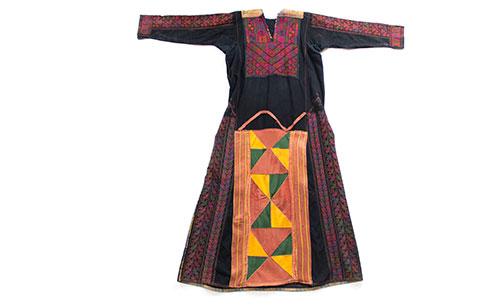
Black dress with intense embroidery. The chest panel shows bow shaped embroidery which are also known as qalayed (necklaces) as well as floral motifs, while the backside of the panel shows floral motifs embroidered on silk cloth by special stitch. The sleeves show heavy embroidery of vine leaves, while the banayeq (sidelines) show motfis of flowers, feathers and manajel (thick braidwork connecting the dress parts).
The bottom front side shows patches of yellow, orange and red silk triangles, with Kashmir cloth on the sides. The bottom of the back side has a stitched-in piece of cloth with blue embroidery of birds and flowers.
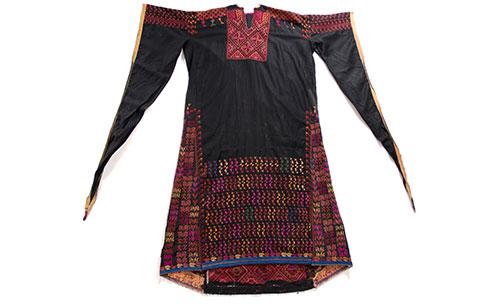
A black dress with wide open sleeves with heavy embroidery. The chest panel shows geometrical motifs (fans), with colored slot. The shoulders show embroidery known as Nishan (emblem) and the sleeves show intense embroidery of cypress trees with waves that include a yellow braidwork along the sleeve. The sides of the dress show banayeq braidwork stiches with floral motifs topped by a motif Maqas (scissors). The lower front side of the dress shows motifs of cypress branches with different color shades. The back shows the Pasha’s tent motif topped by geometrical figure and cypress branches, while the bottom back side (tail) has two blue lines that go around the dress.
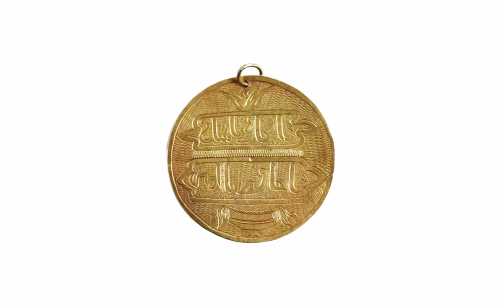
Mâskeh (made) of gold, beautifully written on both sides, on one side يا كافي يا شافي يا حافظ يا أمين Ya Kafi, Ya Shafi (Healer), Ya Hafiz, Ya Ameen on the second side a 4 x 4 square seal with the letters خ ا ل ق (Creator خالق), From a Muslim woman. Jerusalem,1912.
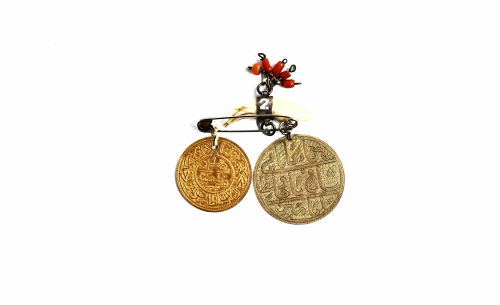
A Mâskeh, a piece of gold coin, two teeth (rimmed with silver, the tooth of a wolf سن الذيب), supposedly of a wolf, with 5 five coral pendants, the Mâskeh is engraved on the two sides. On one side: يا كافي يا شافي يا حافظ يا أمين Ya Kafi, Ya Shafi (Healer), Ya Hafiz, Ya Ameen. On the other side: ما شاء (in a sunbeam star); worn by a Muslim child (tied on the child's hat). Jerusalem, 1913.
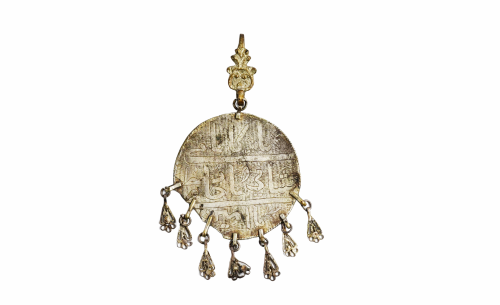
Silver Mâskeh, round, engraved on one side, Ya Kafi, Ya Shafi (Healer), Ya Hafiz, Ya Ameen. يا كافي يا شافي يا حافظ يا أمين It has seven appendages attached, which are secondarily welded; attached to the coin of a fellahah (peasant woman). 1914.
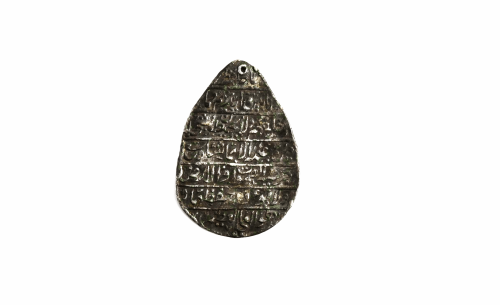
Lead Mâskeh, cast, writing on both sides. Pear shaped Qur'an verses. (15 Turkish piasters), Bought in Jerusalem.1912.
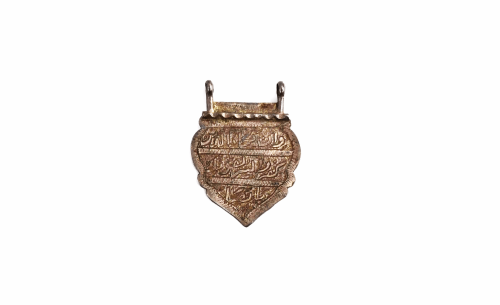
Silver Mâskeh, engraved on one side, Qur'an verses, last two verses of (Surah Al Qalam), (18 Turkish Piasters). Beautiful handwriting, Bought in Jerusalem, 1916.
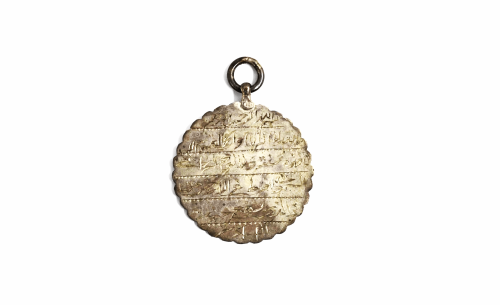
Silver Mâskeh, round, Jerusalem work, engraved on both sides. unclear writing. Qur'an Verse (اية الكرسي) (=Sura 2, 255), Jerusalem 1919.
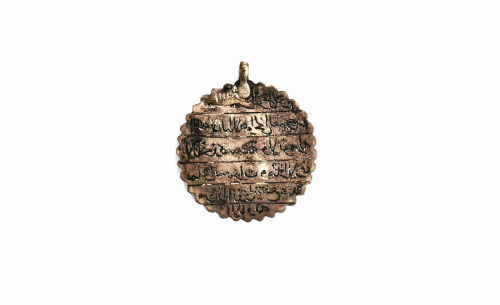
Rounded silver Mâskeh, writing left to right (rare) Text (is) like (no.) 6. [Qur'an Verse (اية الكرسي)] Written on both sides, worn by a child. Jerusalem, 1922
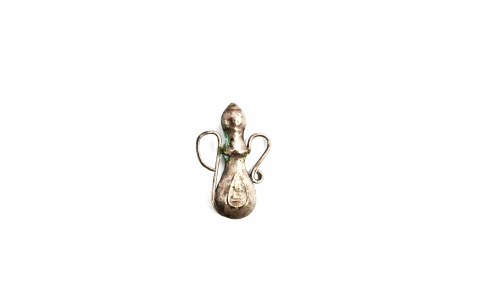
Silver pitcher, with the inscription
يا علي (O Ali)
attached by [engraved wtih] cement, Shiite, bought by a Bukhari Jew in 1941 (for 100 mils), who brought it with him from Bukhara.(city).
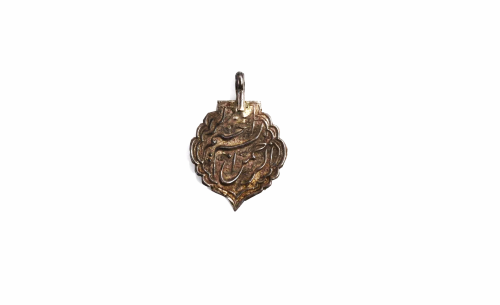
Silver Mâskeh stamped (with) بسم الرحمن الرحيم (In the name of (God) the most gracious, the most merciful). Jerusalem 1913

A pear-shaped Mâskeh written on one side 41 times "Muhammad " محمد and "Once" Mahmud محمود, bought in Jerusalem 1920, (silver).
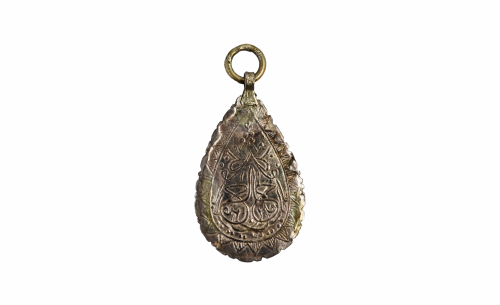
Oval Mâskeh, cast, written on two sides يا حافظ يا أمين (Ya Hafiz Ya Ameen). Each word is written twice, once from right to left and once from left to right. Text on both sides (is) the same. Bought in Nablus in 1914. (Price?).
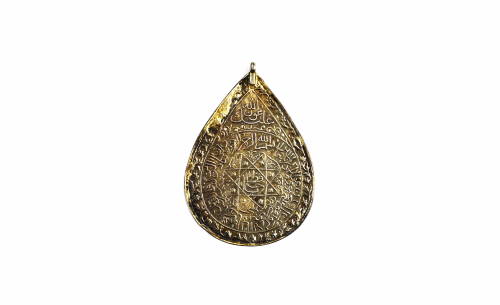
Oval Mâskeh, cast, written on both sides, on one side the names of the seven sleepers written in a star shape. In the middle of the star يا حافظ (O Protector / keeper) in the circle Qur'an verses (Sura 68, the two last verses), above) under the tip الله عون عليك (May God help you)
on the second side in the middle. ما شاء الله (God willing). Over it نور حفظها وهوالعلي العظيم on the side, Sura 2, 255 (rare, interesting), Jerusalem, 1914.
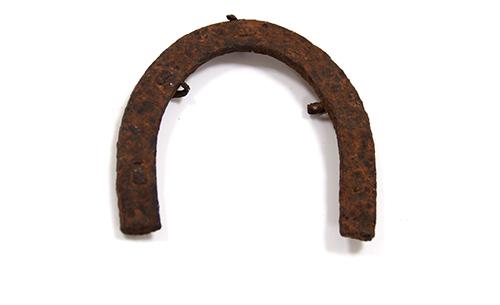
Iron horseshoe. Canaan obtained it in 1944.
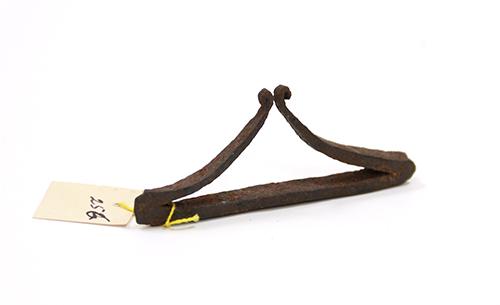
Triangular lighter. Canaan obtained it from Nablus in 1931.
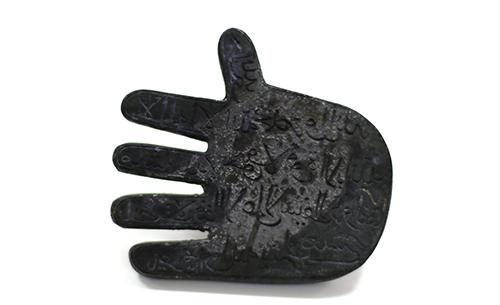
A Palm shaped stamp with religious writings and prayers (Duaa), and a flattened knob placed on the back. It was obtained in 1942 for 300 mils.
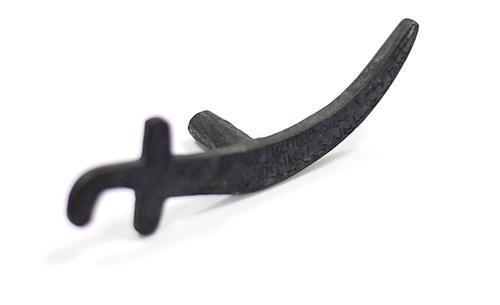
A Bifurcate-sword shape stamp (Ali’s Sword) with writings engraved on its interior and a cylindrical knob placed on its back. It was obtained in 1942, for 500 mil.

Double framed round stamp. Engraved on the upper frame a verse from Surat Al-Isra “Exalted is He who took his servant by night from Al-Masjid Al-Haram to Al-Masjid Al-Aqsa whose surroundings We have blessed.” And engraved in the inner frame “The rock of the Holy City is from Heaven”. Canaan obtained the piece in 1942 for 500 mils.
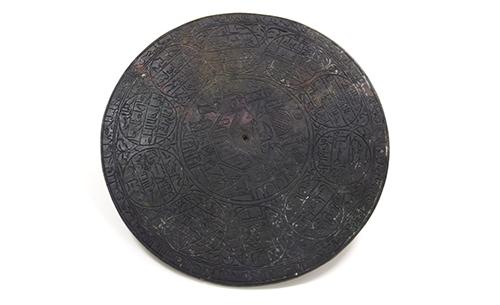
Round black stamp in its middle lies a big circle where the dome of the rock is drawn surrounded by smaller circles with Arabic letters. The outer ring of the stamp also has Arabic letters. Canaan obtained it in 1942 for 1 pound from a Shaikh at Al Haram.
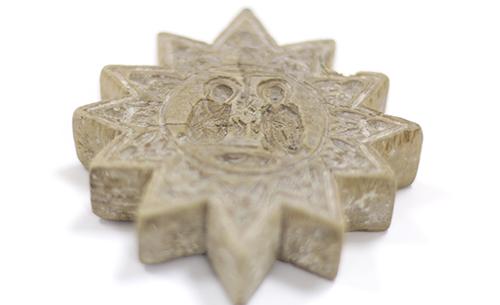
Star shaped stamp with 12 rays (or sun). It has a circle in the middle with an engraving of the image of Mary, Joseph and Jesus Christ. On each ray, engraved an image of a saint. It was used to stamp soap. Canaan obtained it in 1943 from a Christian woman who made soap for pilgrims.
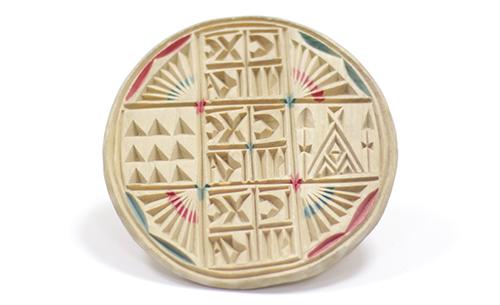
Round shaped stamp with Greek letters and symbols, used for stamping Sunday bread and the Secret Supper. It is also called Tattoo, it has an ornate squared handle attached to the back. Canaan obtained it in 1941 from Jerusalem for 100 mils.
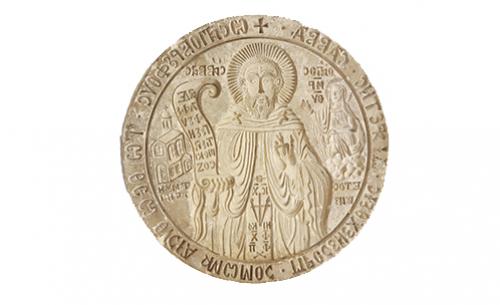
Round shaped stamp with an image of a saint and Latin writings engraved in Greek letters. A Cross is carved on the top and a grip handle is attached to its bottom part so that it is used as a stamp. The piece was obtained from Monk Theodorous in 1942.
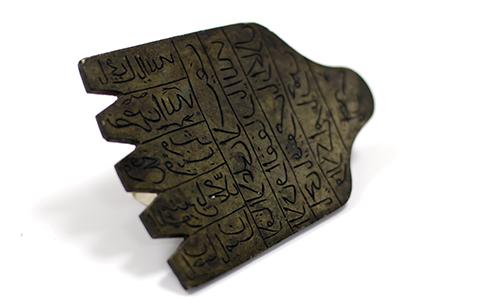
Yellow Palm shaped stamp with Duaa (prayer) written in Arabic and a back handle. The Duaa says: “يا شافي يا الله، نصر من الله، وفتح قريب، وبشر المؤمنين، يا محمد يا حنان يا منان ”. On the five fingers inscribed another Duaa [praising Ali and his sword, and citing names of God in prayer]. It was obtained in 1914 from a Shaikh.
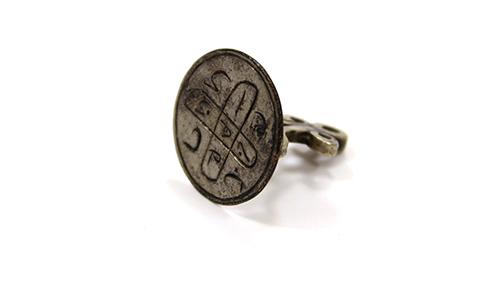
Stamp with the Arabic letters “أجهزط وبدوح”. Supposed to be a stamp and talisman for love and acceptance. Canaan obtained it from Jerusalem in 1941.
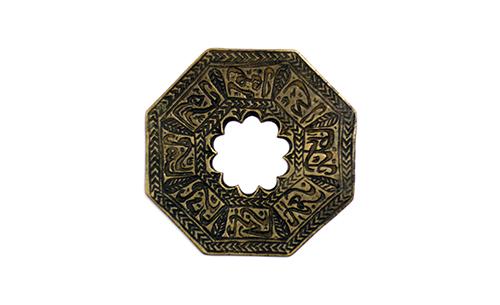
Octagonal talisman with meandrous middle circle. The writing is on one side, saying a Duaa (prayer) [citing 8 names of God cited in the holy Quran: يا حنان يا قيوم يا حي يا سلطان يا رحمن يا رحيم يا ديان يا منان]. The piece was bought from a person named Ohan for 400 mils on the 4th of September 1940.
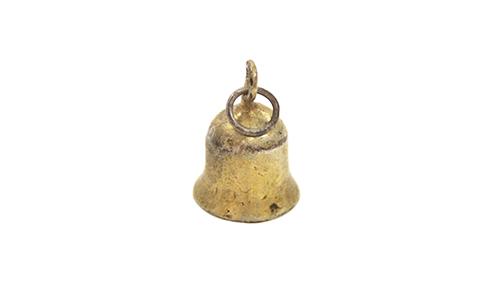
A traditional shaped small sized copper bell in golden color with a pendant hanging loosely in its interior. The pedant is a coiled wire with several twists at its end. Canaan obtained it in 1945 for 250 mils.
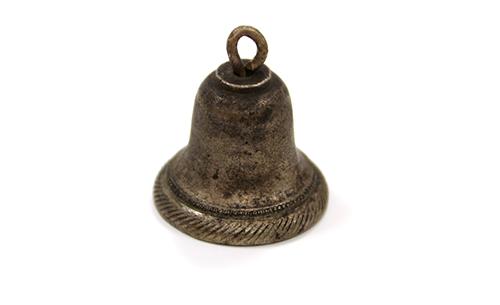
Bell with a semi- circular pendant hanging in its interior. Engraved on the surrounding opening of the bell delicate engravings made of lines and dots. On the top of the ring there is a ring used for hanging the bell. Obtained in 1945 for 250 mils.
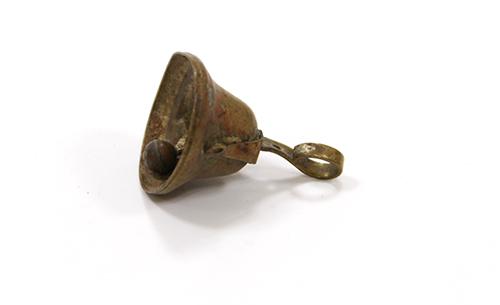
Small open bell with a small ball hanging in its interior. Canaan obtained it in 1920.
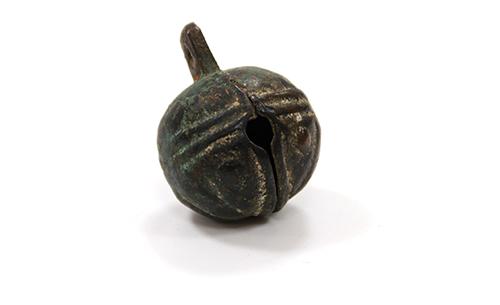
Closed ball-shaped bell with a smaller ball loosely hanging in its interior. It was hung around the neck of a donkey. Canaan bought it in 1915.
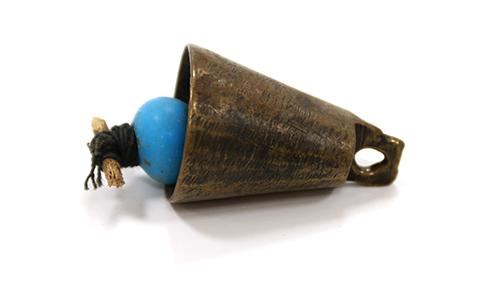
A bell with a blue bead hanging in its interior and attached to it a Celtis stick. The bell was hanging around the neck of a sheep. Canaan bought it in 1917.






























































































